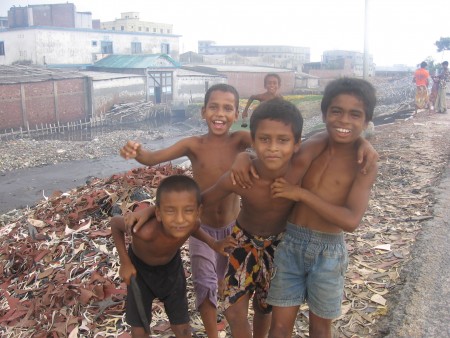Environmental Public Hearings are a mockery of the law in Jharkhand: the case of public hearing at UCIL-Jaduguda
The story of UCIL-Jaduguda and the struggle of the mostly Santal Adivasi People against the company is not unknown to the general
The story of UCIL-Jaduguda and the struggle of the mostly Santal Adivasi People against the company is not unknown to the general
In developing countries, weak environmental regulatory institutions often undermine conventional command-and-control policies. As a result, these countries are increasingly experimenting with alternative approaches that aim to leverage nonregulatory
The Little Green Data Book 2009 points to the world
Stone crushing industry is an important industrial sector in the country engaged in producing crushed stone which acts as raw material for various construction activities such as the construction of roads, bridges, buildings, canals, etc.
This review aims to summarize the existing knowledge on the environmental and occupational health risks of waste electrical and electronic equipment (WEEE) recycling and other end-of-life options.
This is the letter by the Congress of United States, Washington to Chairman & CEO of Dow Chemical Company, Michigan, requesting that Dow ensures that a representative appear in the ongoing legal cases in India regarding Bhopal, that Dow meets the demands of the survivors for medical and economic rehabilitation, and cleans up the soil and groundwater contamination in and around the factory site.
During the night of 2-3 December 1984, a leak of some 40 tons of methyl isocyanate (MIC) gas mixed with unknown other gasses from a chemical plant owned and operated by Union Carbide (India) Limited, a partly-owned subsidiary of the US-based Union Carbide Corporation, caused one of the highest-casualty industrial accidents of the 20th century.
While the use of electric two-wheelers has increased in the People's Republic of China (PRC) in the past decade, such unparalleled growth has not extended beyond the PRC's borders to countries, such as India and Viet Nam, where environmentally detrimental gasoline motorcycles dominate.
Environmental pollutants from many different sources contaminate water, air, and land, putting humans and ecosystems at risk, and often pitting people against industry. By viewing competing interests and their implications within a broad ecosystem analysis, ecohealth approaches strive to protect health while balancing the needs of various stakeholders and
The Central Pollution Control Board (CPCB) has carried out a study to assess the status of ground water quality and soil characteristics around Bhopal gas accident site in the surroundings of Union Carbide of India Ltd. (UCIL), Bhopal. The CPCB study confirms presence of heavy metals, pesticides and some of the volatile organic compounds in the soil samples and the groundwater.
The analysis is done to reveal how light pollution affects protected areas. Hence, two new variables was created from combining the global protected area distribution data and nighttime lights data: a Protected Area Light Pollution Index (PALI) and a Protected Area Human Impact Index (PAHI).
The Indian textile and clothing industry plays a dominant role in the national economy and has a prominent position in the global textile industry. This study conducted domestic market research to help lay the groundwork for formulating effective marketing strategies for eco-friendly products in the domestic
The State Board has issued detailed guidelines from time to time to facilitate the process of grant of consent to establish/consent to operate and also to suitably guide/advice the stone crushing industry for taking appropriate measures for abatement of pollution.

<p>This new report released by Blacksmith Institute and Green Cross Switzerland highlights the top six toxic threats to global health.It ranks pollutants according to the number of people estimated to be at risk from each toxin and describes their physical nature, industries that typically cause their release, common human exposure pathways, and known health effects.</p>
<p>The State Board has issued detailed guidelines from time to time to facilitate the process of grant of consent to establish/consent to operate and also to suitably guide/advice the stone crushing industry for taking appropriate measures for abatement of pollution.</p>
Mercury is one of the most dangerous environmental pollutants, both in its elemental form and in chemical combination. When mercury is released into the environment it gets transformed into methyl mercury through microbial action. The methylation of mercury is a key step in the entrance of mercury into food chains. This methyl mercury is mercury in its most pernicious form.
The dossiers submitted by Mahyco in support of their application for commercialisation of genetically modified (GM) Bt brinjal raise serious concerns. Bt brinjal has been modified to produce an unknown chimeric insecticide toxin containing Cry1Ab and Cry1Ac modified sequences.
Delhi NGO Centre for Science and Environment tested 24 toy samples of major brands for the presence of phthalates. In October 2008, it randomly purchased toy samples from markets in Delhi. Fifteen were soft toys and nine hard toys made in four countries.
Phthalates are chemicals used in toys to soften plastic. Exposure to them can lead to a wide range of health disorders. They are especially dangerous for children under three years, who tend to put these toys in their mouth.
Phthalates are chemicals used in toys to soften plastic. Exposure to them can lead to a wide range of health disorders. They are especially dangerous for children under three years, who tend to put these toys in their mouth. India has no regulations to control use of phthalates in toys. It only has voluntary standards covering safety aspects of toys.